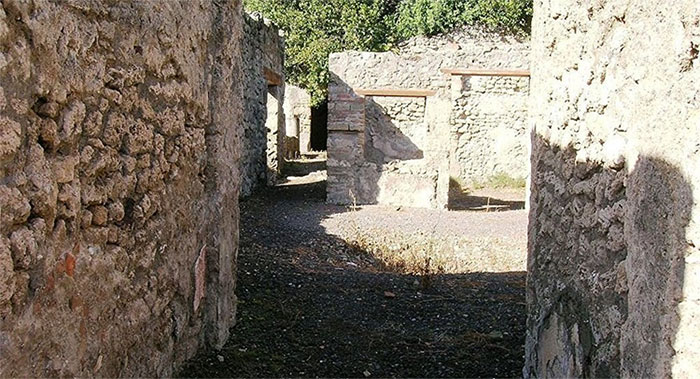Reveal new findings in ancient Roman city - Pompeii
Almost 2,000 years after Pompeii was buried in ash and rock since 79 AD, this ancient city continued to reveal its long-hidden treasures.
According to The Nation, archaeologists have revealed their latest findings at the home of a rich man living in ancient Rome.
One of the most striking findings was the Casa di Giove (House of Jupiter), consisting of frescoes, well-preserved earthenware jars and traces of everyday life preserved through carpet eruption. the worst in history.
The fire traces found in a nearby house blackened the mural wall.

Vesuvius volcano erupted in 79 AD buried buried Pompeii cities.
This house is decorated in the original Roman style, derived from a small picture depicting Jupiter found on a garden shrine.
The house has a courtyard in the center, surrounded by rooms decorated with painted red, yellow, and green marble.
The house of Jupiter was excavated in part in the 18th and 19th centuries, but now archaeologists have discovered more frescoes and decorations, helping us understand the daily life in How did the city thousands of years ago take place?
They also discovered that the buildings reflected the architecture of the later periods of Roman history. Archaeologists found terracotta lion heads, coins, glass ornaments and roof tiles carved with symbols.
Over the past few months, archaeologists have also discovered a nearby square and a row of buildings with intact balconies buried in the catastrophic eruption.
The volcano Vesuvius erupted in 79 AD, buried the cities of Pompeii, Oplontis and Stabiae in ash and rock, and the town of Herculaneum in mud.
All the inhabitants died immediately when the southern Italian city was attacked by the 500 ° C hot-spring lava.
- The source of Pompeii style artefacts
- Why are Roman tombs buried with
- The diet of 'sea breeze' of ancient Romans
- Explain the mystery of the ancient tombs in Pompeii
- The temple is dedicated to Rome as if it was under volcanic ash 2,000 years
- Discover the remains of an ancient city on the outskirts of Vienne
- Ostia ancient Roman port was bigger than the holy land of Pompeii
- Discovering the old city with a 2,000-year-old penile image?
- The 23 most mysterious ancient world wonders that you should visit once in your life
- The city of ancient super-rich Romans sank under the sea
- Recreate Pompeii historical disaster
- Roman city 2,000 years under construction site
 Discovered an ancient centipede fossil 99 million years old
Discovered an ancient centipede fossil 99 million years old Discovered bat-like dinosaurs in China
Discovered bat-like dinosaurs in China Discovered a 200-year-old bronze cannon of the coast
Discovered a 200-year-old bronze cannon of the coast Discover 305 million-year-old spider fossils
Discover 305 million-year-old spider fossils